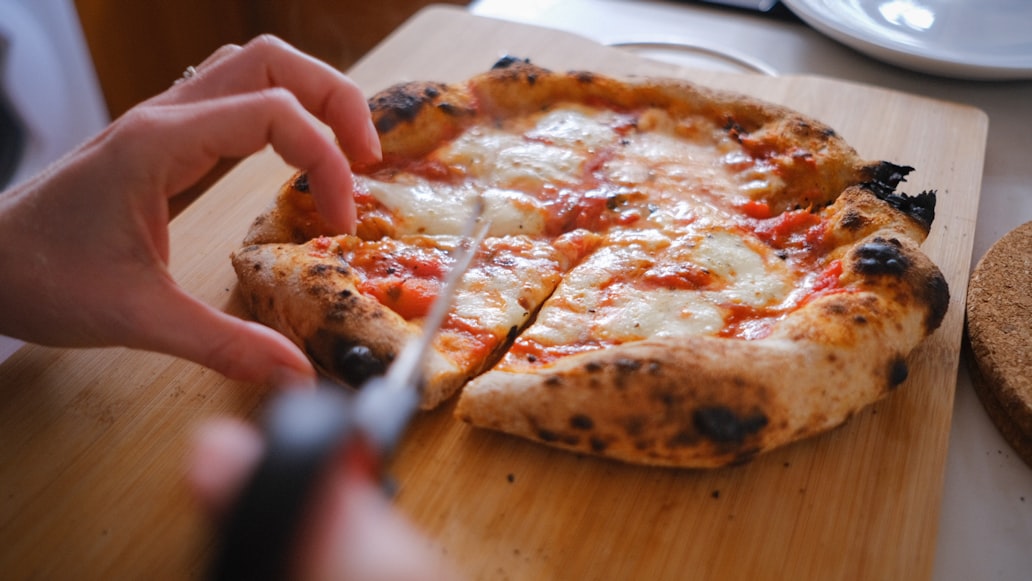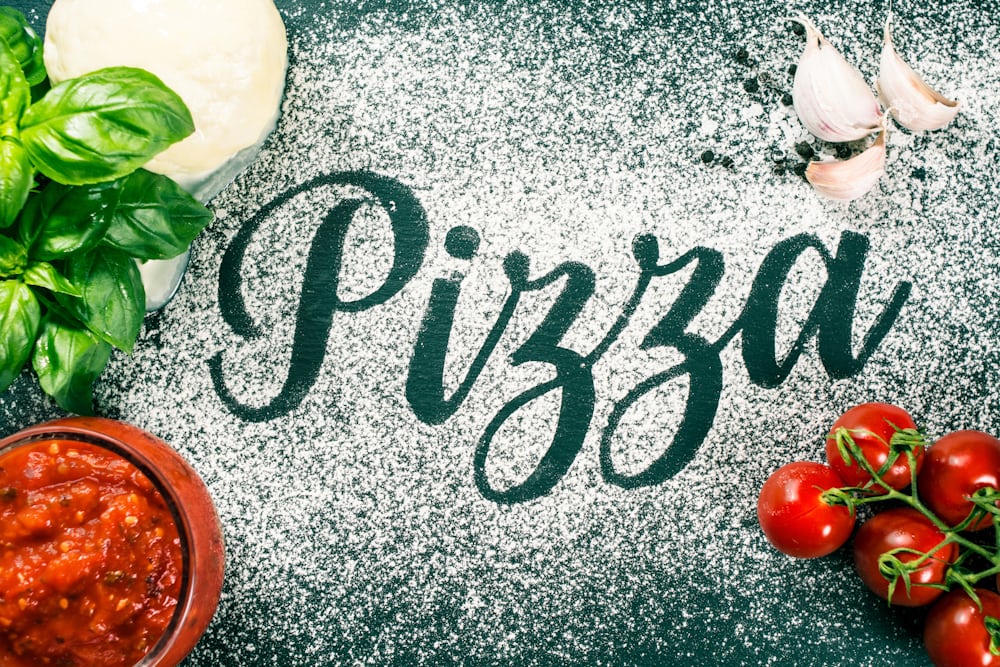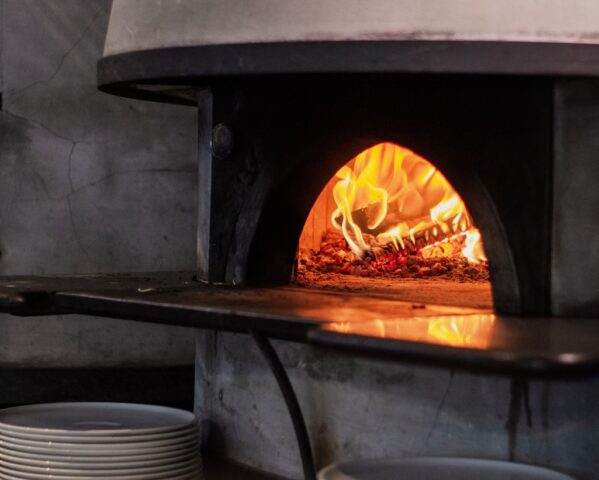If you’re a fan of white pizza, then you know that the key to a delicious slice is the sauce. And when it comes to making the best white pizza sauce, nothing beats the rich, roasted flavor of garlic. Whether you’re making a classic white pizza or adding a new twist to your favorite recipe, this roasted garlic white pizza sauce is sure to elevate your pie to the next level. With just a few simple ingredients and a little bit of time, you can create a mouthwatering sauce that will have your friends and family begging for more.
How to Make the Best Roasted Garlic White Pizza Sauce: A Delicious Recipe

Roasted Garlic White Pizza Sauce
Main Points
- Making the roasted garlic
- Creating the white pizza sauce
- Tips for using the sauce on different pizza variations
- Storage and reheating tips
Understanding the Key Ingredients for a Perfect Roasted Garlic White Pizza Sauce
When it comes to making a delicious roasted garlic white pizza sauce, the key lies in selecting the right ingredients. A well-balanced sauce can elevate the flavors of your pizza and leave your taste buds craving for more. Here are the essential ingredients that will make your roasted garlic white pizza sauce stand out:
1. Roasted Garlic
Roasted garlic is the star ingredient of this sauce. Its rich, caramelized flavor adds a depth of taste that regular garlic simply cannot achieve. To roast garlic, simply drizzle whole garlic bulbs with olive oil, wrap them in foil, and bake until soft and golden brown. The result is a sweet and nutty flavor that will make your pizza sauce truly unforgettable.
2. Fresh Herbs
Adding fresh herbs such as basil, oregano, and thyme can bring a burst of freshness and aroma to your sauce. Chop the herbs finely to release their essential oils and flavor, and then stir them into the sauce just before using it. The combination of roasted garlic and fresh herbs will give your pizza sauce a gourmet touch.
3. Quality Parmesan Cheese
A good quality Parmesan cheese is essential for achieving a creamy and savory texture in your white pizza sauce. Grate the cheese finely and whisk it into the sauce until it melts completely. The umami flavor of Parmesan cheese will enhance the overall taste of the sauce and make it irresistibly delicious.
By using these three key ingredients in the right proportions, you can create a roasted garlic white pizza sauce that is truly exceptional. Experiment with different ratios and cooking methods to find the perfect balance of flavors that suits your palate.

Roasted Garlic White Pizza Sauce
The Art of Roasting Garlic: Tips and Tricks for Maximum Flavor
Roasting garlic is an art that can take your culinary creations to the next level. The slow cooking process brings out the natural sweetness of the garlic and adds a depth of flavor to dishes. Whether you’re a novice cook or a seasoned chef, mastering the art of roasting garlic can elevate your cooking game. Here are some tips and tricks for achieving maximum flavor when roasting garlic.
Choose the Right Garlic
When it comes to roasting garlic, not all varieties are created equal. Hardneck garlic is generally preferred for roasting due to its larger cloves and stronger flavor. Look for bulbs that are firm and plump with tight, unbroken skin. Avoid garlic that feels soft or shows signs of sprouting.
Prep the Garlic Correctly
Before roasting, it’s important to properly prepare the garlic. Cut off the top of the garlic bulb to expose the cloves, drizzle with olive oil, and sprinkle with salt. Wrapping the prepared bulb in foil will help to keep it moist and prevent burning during the roasting process.
Roast at the Right Temperature
The key to achieving maximum flavor when roasting garlic is to cook it at the right temperature. Preheat your oven to 400°F and place the prepared garlic bulbs in a muffin tin or on a baking sheet. Roast for 35-45 minutes, or until the cloves are golden brown and tender.
Get Creative with Roasted Garlic
Once you’ve mastered the art of roasting garlic, the culinary possibilities are endless. Use roasted garlic as a spread for bread, mix it into mashed potatoes, or add it to sauces and dressings for an extra depth of flavor. You can even blend roasted garlic with olive oil to create a delicious and versatile condiment.
Conclusion
Roasting garlic is a simple yet impactful technique that can take your cooking to new heights. By choosing the right garlic, prepping it correctly, and roasting at the right temperature, you can maximize the flavor and enjoy the sweet, caramelized goodness of roasted garlic in your dishes.
Exploring the Best Cheese Choices for White Pizza Sauce
When it comes to making a delicious white pizza, the choice of cheese is crucial. The right cheese can elevate the flavors and take your white pizza to the next level. In this article, we’ll explore some of the best cheese options for white pizza sauce and discuss their unique characteristics.
Mozzarella
Mozzarella is a classic choice for white pizza sauce. Its creamy texture and mild flavor complement the other ingredients perfectly. Whether you opt for fresh or shredded mozzarella, this cheese will melt beautifully and create a gooey, stringy topping for your white pizza.
Ricotta
Ricotta is another fantastic cheese for white pizza sauce. Its slightly grainy texture adds a delightful contrast to the smoothness of the sauce, while its mild, slightly sweet flavor adds a delicate touch to the overall taste of the pizza. Ricotta can be dolloped on top of the sauce or mixed in for a creamier consistency.
Fontina
For a more robust and nutty flavor, consider using fontina cheese for your white pizza sauce. This semi-soft cheese melts beautifully and adds a rich, savory taste to the pizza. Its meltability makes it a great choice for achieving that perfect, golden-brown crust and gooey cheese pull.
Ultimately, the best cheese for your white pizza sauce will depend on your personal preferences and the flavor profile you want to achieve. Whether you choose mozzarella, ricotta, fontina, or a combination of these cheeses, the key is to experiment and find the perfect balance that tantalizes your taste buds.
Enhancing the Flavor Profile: A Guide to Selecting the Right Herbs and Spices for Your Pizza Sauce
When it comes to making the perfect pizza, the sauce is a crucial element that can make or break the flavor profile. Selecting the right combination of herbs and spices is key to creating a delicious and memorable pizza sauce. In this guide, we will explore the different herbs and spices that you can use to enhance the flavor of your pizza sauce.
Herbs and Spices for Pizza Sauce
Here are some popular herbs and spices that are commonly used in pizza sauce:
- Basil: This classic herb is a must-have for any pizza sauce. Its sweet and peppery flavor adds a fresh and aromatic touch to the sauce.
- Oregano: Another essential herb for pizza sauce, oregano brings a robust and earthy flavor to the sauce.
- Garlic: Whether used fresh or in powdered form, garlic adds a pungent and savory flavor to the sauce.
- Thyme: This herb has a subtle, earthy flavor that can add depth to the overall taste of the sauce.
- Red Pepper Flakes: For those who enjoy a bit of heat, red pepper flakes can add a kick to the pizza sauce.
- Onion Powder: Adding a hint of sweetness and savory flavor, onion powder is a versatile ingredient in pizza sauce.
| Herb or Spice | Flavor Profile |
|---|---|
| Basil | Sweet and peppery |
| Oregano | Robust and earthy |
| Garlic | Pungent and savory |
| Thyme | Subtle and earthy |
| Red Pepper Flakes | Spicy |
| Onion Powder | Sweet and savory |
When selecting herbs and spices for your pizza sauce, it’s important to consider the flavor profile you want to achieve. Experimenting with different combinations and proportions can help you create a sauce that perfectly complements your pizza toppings.
Mastering the Technique: How to Achieve the Ideal Consistency for White Pizza Sauce
When it comes to making a delicious white pizza, the sauce plays a crucial role in determining the overall flavor and texture of the final product. Achieving the perfect consistency for the white pizza sauce is key to mastering this classic dish. Here’s how you can ensure that your white pizza sauce has the ideal texture and taste.
Ingredients Matter
One of the most important factors in achieving the ideal consistency for white pizza sauce is using the right ingredients. To create a smooth and creamy texture, it’s essential to use high-quality ricotta cheese, fresh garlic, and a premium olive oil. These ingredients will not only contribute to the flavor of the sauce but also help in achieving the desired consistency.
Technique and Timing
Another key aspect of perfecting the white pizza sauce consistency is the technique used during preparation. It’s important to sauté the garlic in olive oil until it is fragrant but not browned, as this will affect the color and texture of the sauce. Additionally, the timing of adding the ricotta cheese and seasoning is crucial in achieving a smooth and creamy consistency.
Consistency is Key
Ultimately, the most crucial element in achieving the ideal consistency for white pizza sauce is patience and precision. It may take a few tries to get the texture just right, but with the right ingredients, technique, and timing, you can master the art of creating the perfect white pizza sauce every time. Remember to taste and adjust as needed to ensure that the consistency is just right before using it on your pizza.
Experimenting with Flavor Variations: Unique Additions to Elevate Your Roasted Garlic White Pizza Sauce
When it comes to creating a delicious roasted garlic white pizza sauce, the possibilities are endless. Experimenting with different flavor variations can elevate your sauce to new heights, giving your pizza a unique and unforgettable taste. Here are some unique additions to consider incorporating into your roasted garlic white pizza sauce:
Truffle Oil
For a touch of elegance and earthy richness, consider adding a splash of truffle oil to your roasted garlic white pizza sauce. The distinct flavor of truffles can take your sauce from ordinary to extraordinary, elevating the overall taste of your pizza.
Crushed Red Pepper Flakes
If you’re looking to add a bit of heat and spice to your roasted garlic white pizza sauce, consider incorporating crushed red pepper flakes. This addition can give your sauce a subtle kick, adding an extra layer of flavor to your pizza.
Fresh Herbs
Adding fresh herbs such as basil, oregano, or thyme can bring a burst of freshness and vibrancy to your roasted garlic white pizza sauce. The aromatic and flavorful qualities of fresh herbs can complement the richness of the sauce, creating a well-balanced and dynamic flavor profile.
“Experimenting with flavor variations is the key to creating a truly exceptional roasted garlic white pizza sauce.”
Remember, the important thing is not to be afraid to experiment and explore different flavor combinations to find the perfect balance for your roasted garlic white pizza sauce. By being creative and open to new ideas, you can discover unique additions that will take your sauce to the next level.
Perfect Pairings: Discovering the Ideal Crust and Toppings for Your White Pizza Creation
When it comes to creating the perfect white pizza, the crust and toppings play a crucial role in achieving the ideal flavor and texture. Finding the perfect pairing of crust and toppings can elevate your white pizza creation to a whole new level. In this article, we will explore some of the best crust and topping combinations for your white pizza.
Ideal Crust Options:
- Thin Crust: Thin crusts work well with white pizza as they provide a crispy base that complements the creamy toppings.
- Cauliflower Crust: For a healthier alternative, a cauliflower crust adds a unique flavor and texture to your white pizza.
- Garlic Butter Crust: Infusing your crust with garlic butter can add another layer of flavor to your white pizza.
Perfect Toppings:
- Ricotta Cheese: Creamy ricotta cheese is a staple topping for white pizza, adding richness and depth of flavor.
- Spinach: Fresh spinach adds a pop of color and a hint of earthy flavor to your white pizza.
- Prosciutto: The saltiness of prosciutto pairs beautifully with the creamy white sauce of the pizza.
Experiment with different crust and topping combinations to find the perfect pairings for your white pizza creation. Whether you prefer a classic thin crust with ricotta and spinach or a unique cauliflower crust with prosciutto and garlic butter, there are endless possibilities for creating a delicious white pizza.
The Science of Baking: Tips for Achieving the Perfect Texture and Crust with White Pizza Sauce
When it comes to baking, achieving the perfect texture and crust for your white pizza sauce is a delicate science. The combination of ingredients, mixing techniques, and baking methods all play a crucial role in the outcome of your pizza.
Ingredients
One of the key factors in achieving the perfect texture and crust with white pizza sauce is the use of high-quality ingredients. When making your white pizza sauce, be sure to use fresh, high-quality flour, yeast, and olive oil. These ingredients will contribute to a better texture and crust.
| Ingredient | Quality |
|---|---|
| Flour | Fresh, high-quality |
| Yeast | Fresh, high-quality |
| Olive Oil | Extra virgin, high-quality |
Mixing Techniques
The way you mix your pizza dough also has a significant impact on the texture and crust. Overmixing or undermixing the dough can result in a tough or chewy crust. The key is to mix the dough until it comes together and then knead it gently to develop the gluten, which will give the crust its desired texture.
Baking Methods
Finally, the baking method is crucial in achieving the perfect texture and crust with white pizza sauce. Preheating your oven and using a pizza stone or a baking sheet will help create a crispy crust. Additionally, using the right temperature and baking time is essential to achieve the perfect texture.
By paying attention to these key factors and using high-quality ingredients, proper mixing techniques, and the right baking methods, you can achieve the perfect texture and crust with white pizza sauce. Remember, the science of baking is all about precision, patience, and practice.
Savoring the Experience: Tips for Serving and Enjoying Your Roasted Garlic White Pizza Sauce Creation
Creating a flavorful roasted garlic white pizza sauce is an art form, and savoring the experience of serving and enjoying it is essential. Whether you are a seasoned home chef or a novice in the kitchen, these tips will help you make the most of your delicious creation.
Preparation is Key
Before you start making your roasted garlic white pizza sauce, it’s important to gather all of your ingredients and prepare them properly. Fresh garlic, high-quality olive oil, and a blend of your favorite herbs and spices will elevate the flavor of your sauce. Take the time to mince the garlic finely and sauté it gently in the olive oil to release its full flavor.
Serving Suggestions
Once your roasted garlic white pizza sauce is ready, it’s time to think about how best to serve it. This creamy, savory sauce pairs well with a variety of toppings, including grilled chicken, roasted vegetables, or a medley of fresh herbs. Consider layering the sauce on a pre-baked pizza crust and topping it with your favorite ingredients for a gourmet twist on a classic dish.
Enjoy Every Bite
When it comes time to enjoy your roasted garlic white pizza sauce creation, take a moment to savor each bite. The rich, complex flavors of the roasted garlic and creamy sauce deserve to be appreciated with each mouthful. Pair your pizza with a crisp salad and a glass of your favorite wine for a truly indulgent experience.
Conclusion
In conclusion, this Roasted Garlic White Pizza Sauce Recipe is a must-try for anyone looking to elevate their homemade pizza game. The creamy and flavorful sauce is easy to make and adds a delicious twist to any pizza. Whether you’re a fan of traditional tomato sauce or not, this white sauce is sure to be a hit. Give it a try and enjoy the delicious flavors of roasted garlic in every bite!
Frequently Asked Questions
What are the main ingredients for Roasted Garlic White Pizza Sauce?
The main ingredients are roasted garlic, heavy cream, Parmesan cheese, and seasoning.
Can this sauce be made ahead of time?
Yes, you can make the sauce ahead of time and store it in an airtight container in the refrigerator for up to 3 days.
Can I substitute the heavy cream with another ingredient?
You can use whole milk as a substitute for heavy cream, but the consistency and flavor of the sauce may be slightly different.
How can I store leftover sauce?
Leftover sauce can be stored in an airtight container in the refrigerator for up to 3 days.
Can I freeze this sauce?
Yes, you can freeze the sauce in an airtight container for up to 3 months. Thaw it in the refrigerator before using.
Is this sauce gluten-free?
Yes, this sauce is gluten-free as long as the ingredients used are gluten-free. Be sure to check the labels on the products you use.
Can I make this sauce without Parmesan cheese?
You can omit the Parmesan cheese, but it will alter the flavor and texture of the sauce.
How can I adjust the consistency of the sauce?
You can adjust the consistency by adding more or less heavy cream to achieve the desired thickness.
Can I add other herbs or seasonings to the sauce?
Yes, you can customize the sauce by adding herbs and seasonings such as basil, oregano, or red pepper flakes to suit your taste.
Can I use this sauce for pasta?
Yes, this sauce can be used for pasta dishes as well as for pizza.
Can I use low-fat cream instead of heavy cream?
Yes, you can use low-fat cream instead of heavy cream, but the texture and taste of the sauce may be slightly different.
















0 Comment